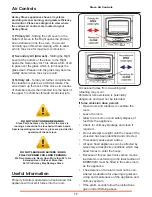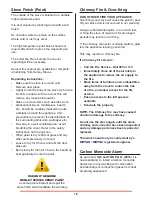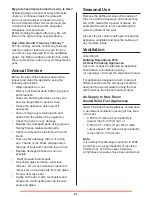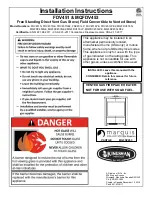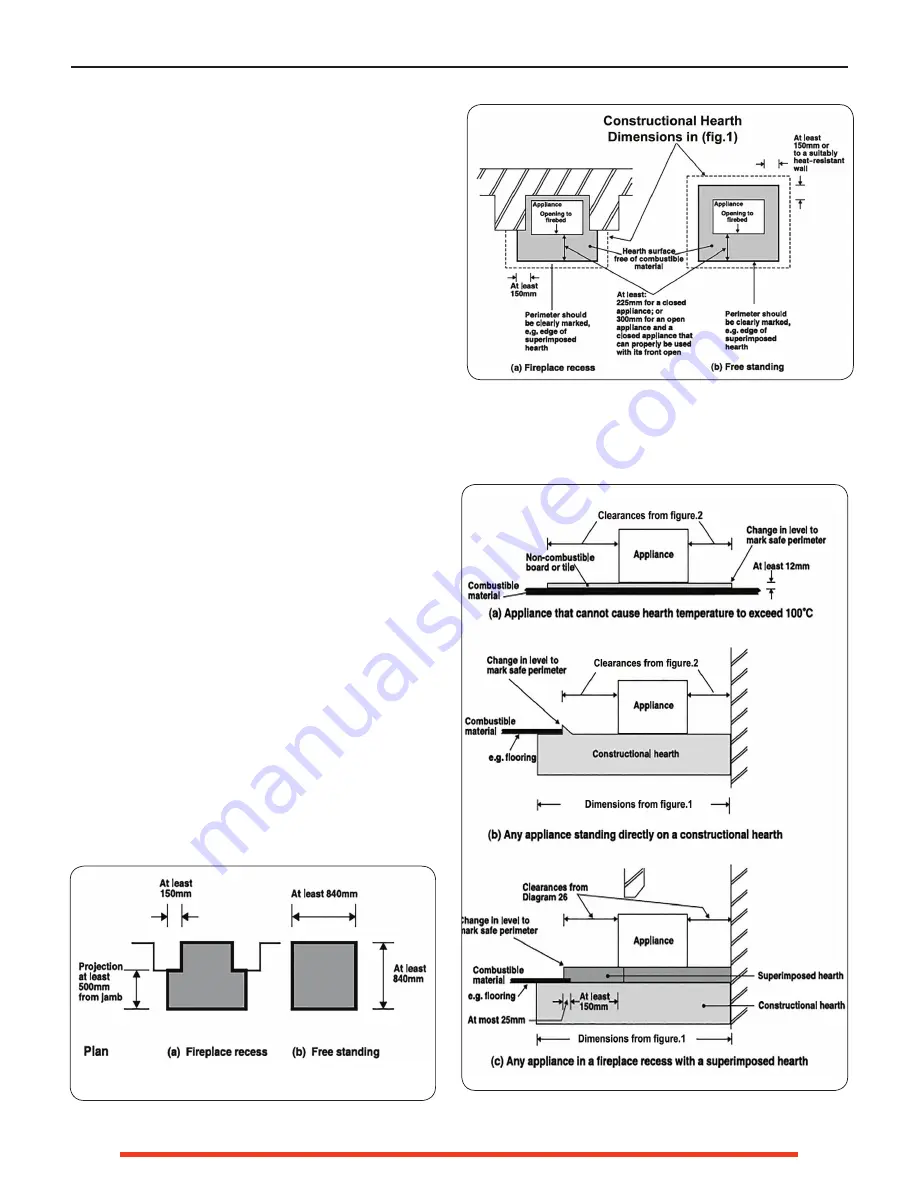
6
Hearth
fig.1 Constructional Hearth Dimensions
for Solid Fuel Appliances & Open Fires
Hearths should be constructed from suitably ro-
bust materials & to appropriate dimensions.
(fig.1)
A way of making provision would be to adopt the
guidelines outlined below & to provide a hearth
appropriate to the temperatures that the appli-
ance can create around it.
The hearth should be able to accommodate the
weight of the appliance & it’s chimney if the
chimney is not independently supported.
Consult a structural engineer for advice before
proceeding.
If there is no existing fireplace or chimney it is
possible to construct a suitable non-combustible
housing and hearth setting. The flue must be
installed in accordance with all local and national
regulations and current rules in force.
Check if adding a new chimney to your property
requires planning permission.
The Stove should be installed on:
A:
Hearths made of non-combustible board /
sheet material or tiles at least 12mm thick
(fig.3)
,
if the appliance is not to stand in an appliance
recess and has been tested to an applicable
appliance standard to verify that it cannot cause
the temperature of the upper surface of the
hearth to exceed 100°C; or
B.
Constructional hearths in accordance with the
guidelines outlined.
(fig.2)
Constructional Hearths should have dimensions
as outlined in figure 1 above.
They should be made of solid, non-combustible
such as concrete or masonry, at least 125mm
thick, including the thickness of any non-
combustible floor and/or decorative surface.
fig.2 Non Combustible Hearth
surrounding Solid Fuel Appliance
fig.3. Ways of Providing Hearths

















